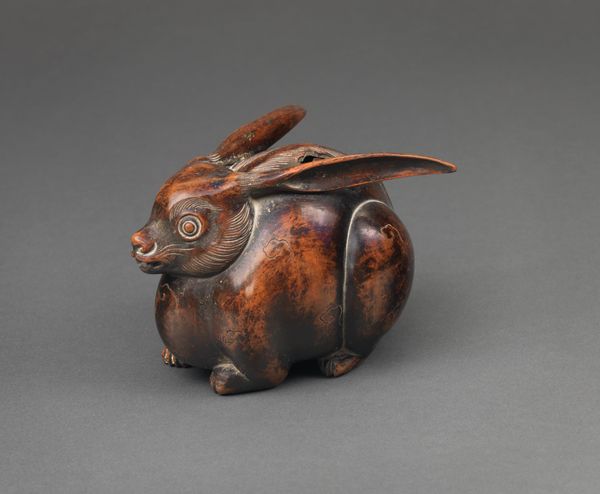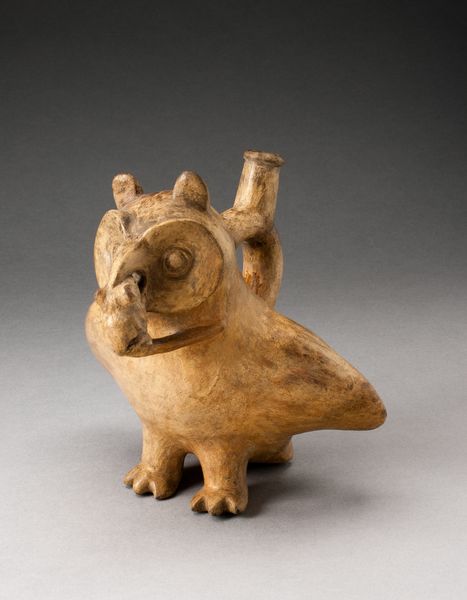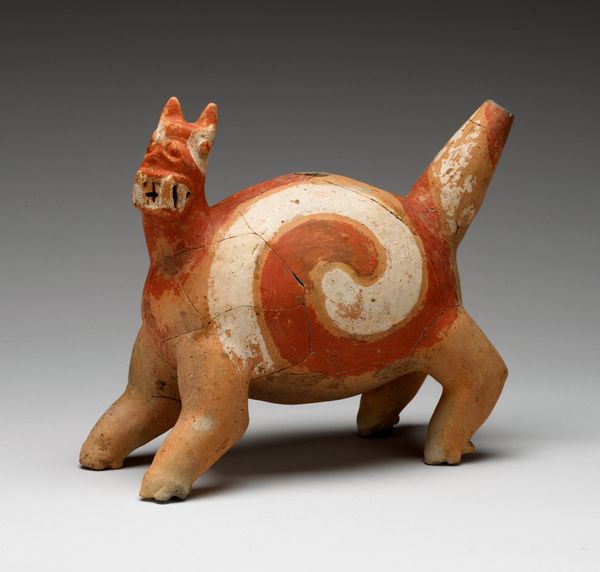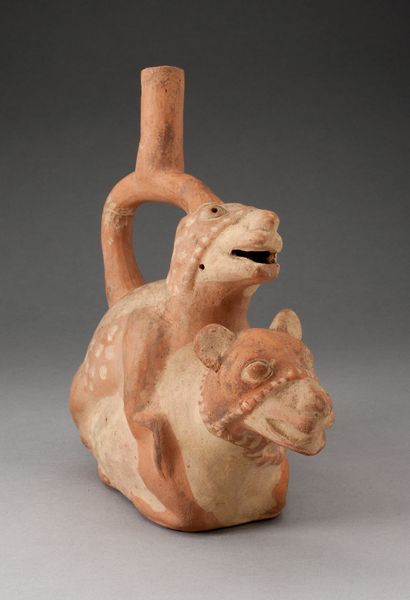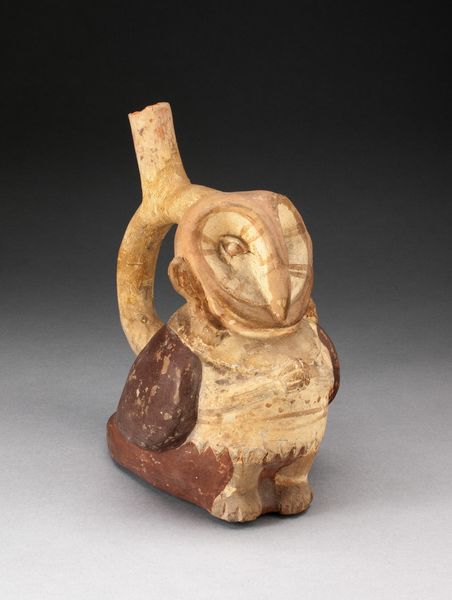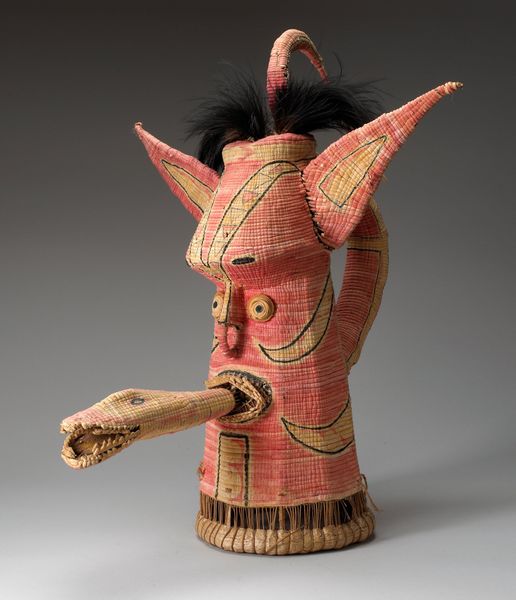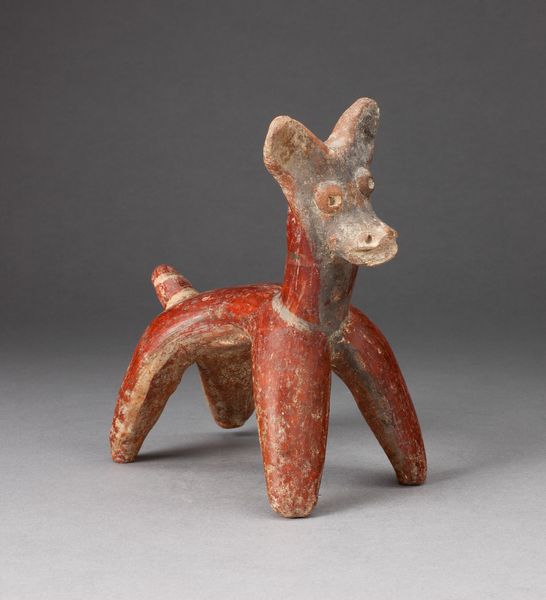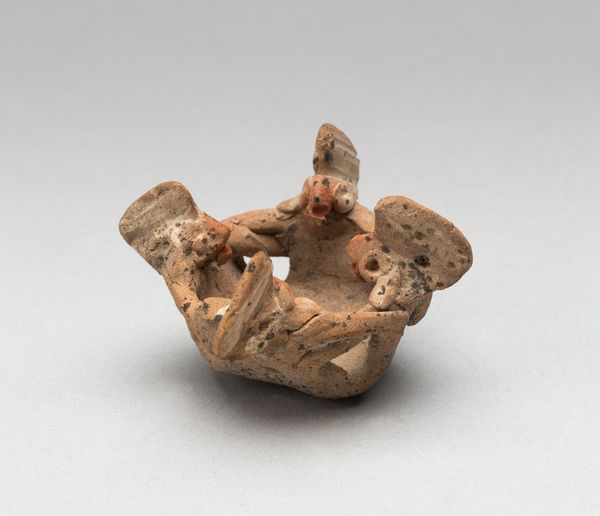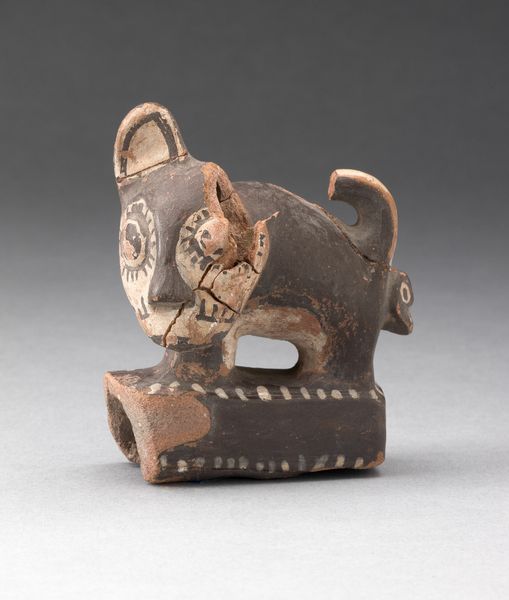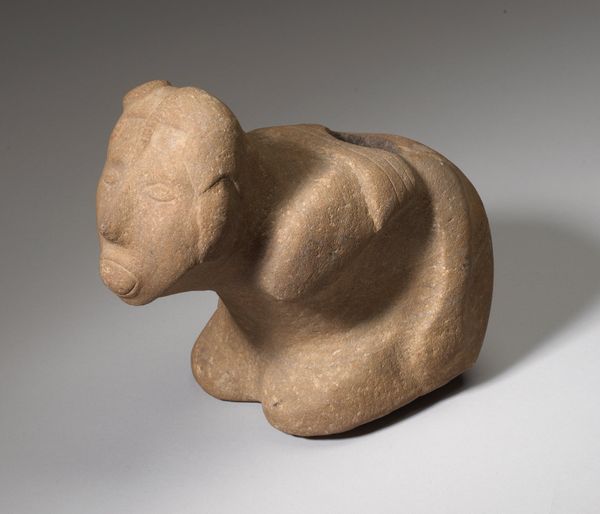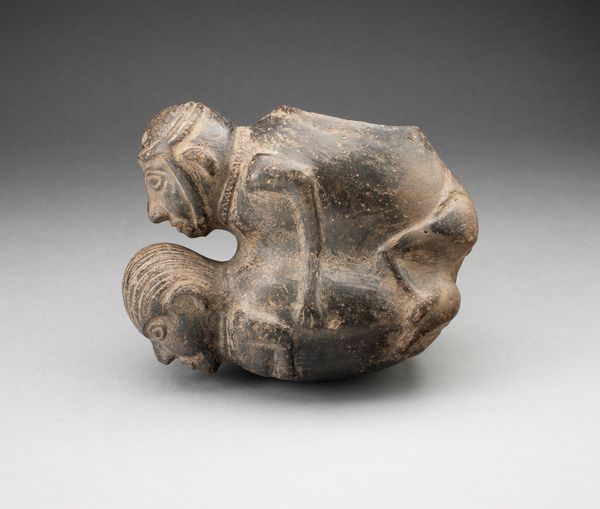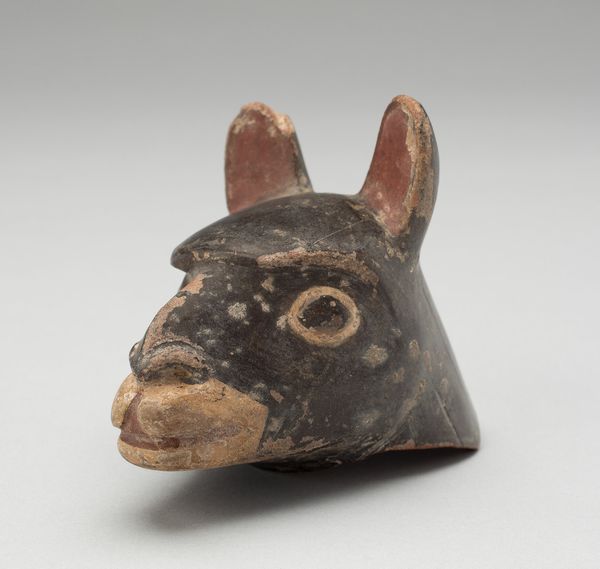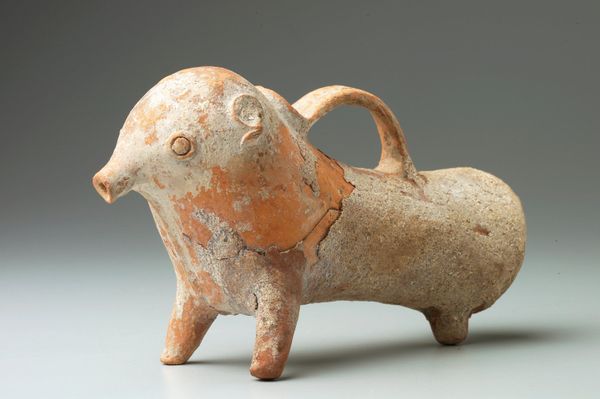
Terracotta vase in the form of a Ketos (Sea Monster) 650 BC
0:00
0:00
ceramic, sculpture, terracotta
#
greek-and-roman-art
#
ceramic
#
fantasy-art
#
figuration
#
form
#
ancient-mediterranean
#
sculpture
#
terracotta
Copyright: Public domain
This vase, in the form of a Ketos, or sea monster, was made in Ancient Greece, likely around the 6th century BC, from terracotta clay. The clay was carefully molded, perhaps using simple hand-building techniques, to form the detailed shape of the mythical creature. The inherent qualities of the clay—its plasticity, its ability to be shaped and hold form—are crucial to the vase’s appearance. The artist then used a pointed tool to carve in details and added slip, a liquid clay, to decorate the surface, creating patterns that resemble scales and other features. The vase-making tradition in Ancient Greece was highly skilled and specialized. The labor involved in extracting, processing, shaping, and firing the clay was significant, reflecting the economic and social structures of the time. This piece also speaks to the wider culture of consumption, where functional objects were elevated to works of art through careful craftsmanship. By focusing on the material and making of this Ketos vase, we can appreciate the artistic skill of the ancient Greeks, while challenging our modern ideas about craft and fine art.

